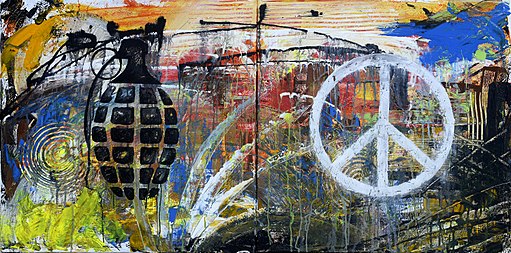
Carving a path through Peaceful Protest
To use a straightforward definition, a protest is something that you do mainly when you wish to achieve social change or have your voice heard through injustice. Add peaceful to that and you have a perfect demonstration of a yearning for change, hurting no one and always hoping for something different. However, how popular are peaceful demonstrations in today’s society?
Numerous people still believe in violence as a means to assert themselves over others and claim what they believe is theirs, whether it be a matter of ethics and beliefs or a matter of possession (see various wars, coups, and conflicts over countries and borders). According to Peace Alliance, with data taken from WHO (World Health Organization), ‘[t]he 20th century was one of the most violent periods in human history. An estimated 191 million people lost their lives directly or indirectly as a result of conflict, and well over half of them were civilians.’ Why do we, then, still believe in the power of violence and look down on peaceful demonstrations of desire for change? Is it because history is filled with examples of authoritarian figures achieving their goals through violence? Could it be that bigotry and racism are openly allowed as justifiable feelings, taking us further into a darker past when that was the norm? You might well think so looking at the world today. Hatred appears to be establishing a grip across our societies and, possibly now more than ever, political figures of a “civilized world” will accept this and let it happen, or even encourage it. How can peaceful protest prevail over that?
Surprisingly, peacefully protesting for change has achieved more than violent demonstration down the years. Based on political scientist Erica Chenoweth’s findings, between the years of 1900 and 2006, peaceful demonstrations had a higher rating of success than violent campaigns. In particular, even though violent and non-violent campaigns rated at approximately a 40% success in the 1940s, the percentage of violent campaigns dropped dramatically until 2006, when it had a success rate of only 10%. This all comes in contrary to non-violent campaigns, whose success had skyrocketed to 70% that year.
Based on these results, how come violent demonstrations are still around? To be honest, I do not think we will ever eschew them, simply because not everyone is on the same page or has the same definition of social change. Bigotry and racism may always be the solution for one group of people, while peace is for the other. However, education does play a fundamental role in what we fight for and I firmly believe that objectivity and knowledge go a long way to choosing a more sustainable path to a country’s well-being. Violence causes violence in the sense that it brings about controversial feelings in the public’s opinions as to whose side they should be on; should they support the government and its representatives; the police force who try to calm things down, or the fervent protesters who trying to force change towards for a better country?
No matter the outcome of a protest, statistics do indicate that peaceful ones stand the best chance of securing a more favourable result and having a higher percentage of backing from the public. Shouldn’t we, therefore, try to carve a path this way? Especially in these times, when there are an increasing number of causes to fight for.